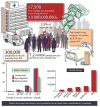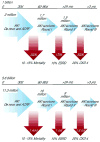Raising awareness of acute kidney injury: a global perspective of a silent killer
- PMID: 23636171
- PMCID: PMC3758780
- DOI: 10.1038/ki.2013.153
Raising awareness of acute kidney injury: a global perspective of a silent killer
Abstract
Worldwide, acute kidney injury (AKI) is associated with poor patient outcomes. Over the last few years, collaborative efforts, enabled by a common definition of AKI, have provided a description of the epidemiology, natural history, and outcomes of this disease and improved our understanding of the pathophysiology. There is increased recognition that AKI is encountered in multiple settings and in all age groups, and that its course and outcomes are influenced by the severity and duration of the event. The effect of AKI on an individual patient and the resulting societal burden that ensues from the long-term effects of the disease, including development of chronic kidney disease (CKD) and end-stage renal disease (ESRD), is attracting increasing scrutiny. There is evidence of marked variation in the management of AKI, which is, to a large extent, due to a lack of awareness and an absence of standards for prevention, early recognition, and intervention. These emerging data point to an urgent need for a global effort to highlight that AKI is preventable, its course is modifiable, and its treatment can improve outcomes. In this article, we provide a framework of reference and propose specific strategies to raise awareness of AKI globally, with the goal to ultimately improve outcomes from this devastating disease.
Conflict of interest statement
Disclosure: For this article the authors declare no conflict of interest
Figures



References
Publication types
MeSH terms
Grants and funding
LinkOut - more resources
Full Text Sources
Other Literature Sources
Medical

